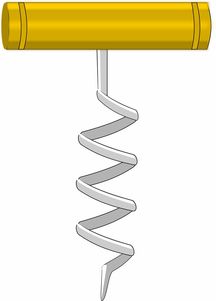How to identify support and resistance levels?
How to Identify Support and Resistance Levels?
Introduction
Trading across forex, stocks, crypto, indices, options, and commodities often boils down to reading price psychology—the moments when price slows, pauses, or reverses. Support and resistance levels are the calendar pages of that story: spots where buyers or sellers step in, creating a ceiling or floor that the market tests again and again. Getting a feel for these zones isn’t about magic signals; it’s about watching price action, context, and how each instrument behaves in different environments.

What are support and resistance?
Support is the price area where demand tends to overpower selling, creating a floor that prices bounce off. Resistance is the opposite—the ceiling where supply overwhelms demand, causing pullbacks. Think of them as commonly revisited zones shaped by past turning points, order flow, and crowd psychology. Rather than single price points, the most reliable levels are often zones where multiple factors converge.
How to identify them
- Price action signals: Look for repeated tests with wicks rejecting higher or lower prices, followed by a reversal candle or a stall in momentum.
- Round numbers and psychology: Big whole numbers (think 1.2000, 10000, or $100) often attract more orders and become self-fulfilling levels.
- Swing highs and lows: Previous peaks and troughs map out the most meaningful zones where reversals occurred.
- Moving averages as anchors: Dynamic S&R can act as flexible barriers, especially on higher timeframes where trend context matters.
- Volume and order flow clues: Volume spikes near suspected levels can confirm buyers stepping in or sellers losing steam.
- Confluence across timeframes and tools: A level that appears on daily charts, weekly charts, and in Fibonacci retracements carries more weight.
Practical tips and reliability
- Confirm with multiple timeframes: A level on a daily chart that aligns with a 4H boundary is more robust than a single-timeframe sighting.
- Watch for retests before entries: A price returning to test a zone after an initial break or bounce often offers a cleaner setup.
- Manage risk with clear stops: Place stops just beyond the level to avoid being knocked out by a candlestick wick.
- Don’t chase: If price breaches a zone with no sign of reversal, reassess and wait for a new confluence rather than forcing a trade.
Asset-specific nuances
- Forex and indices: Levels tend to form around liquidity pools and macro drivers; expect more frequent retests in ranges.
- Stocks and commodities: Corporate events or supply-demand shifts can create sharper, shorter-lived zones.
- Crypto and options: Higher volatility means wider zones but faster feedback; use tighter risk controls.
- In all cases, combine S&R with trend context, volume, and liquidity considerations.
DeFi, AI, and the prop-trading edge
Decentralized finance brings on-chain price discovery but also fragmentation and MEV risks. S&R concepts still apply, yet traders must account for liquidity depth on DEXs and potential slips during fast moves. Smart contracts and AI-trade bots are beginning to place orders automatically when price touches a verified zone, offering speed but requiring careful risk guards.
Future trends
Expect smarter rule sets, cross-market optimization, and contract-enabled triggers that turn S&R into automated strategies. The goal isn’t perfection but a more disciplined, adaptable approach to risk and opportunity.
Promotional slogans
- Read price, not hype—trade with confidence around support and resistance.
- Where price pauses is where opportunity begins.
- Master the zones, unlock smarter prop-trading potential.